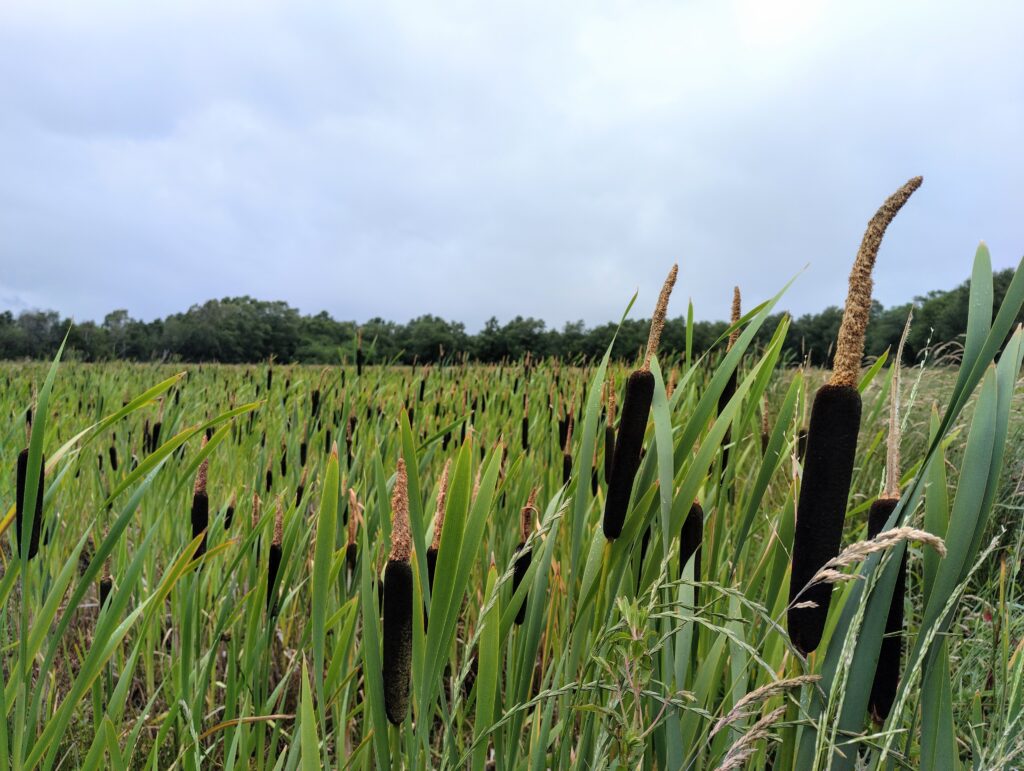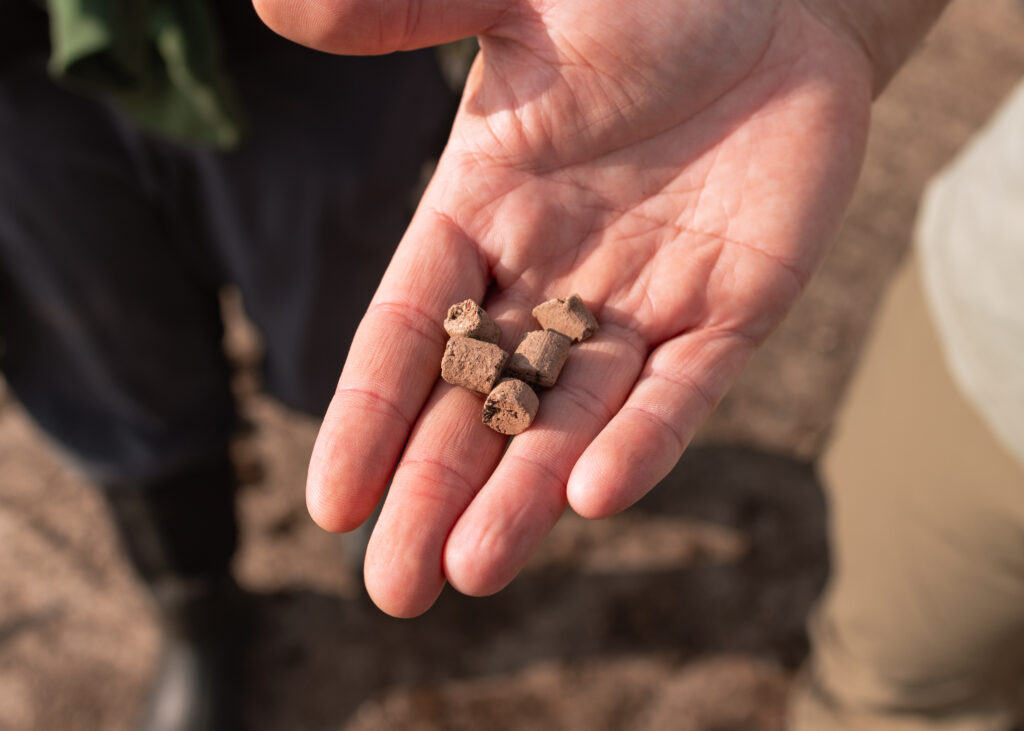Bulrush wetter farming trial gets project extension

A pioneering project looking at ways that farmers can farm on waterlogged land while also protecting environmentally important peatlands and combatting climate change will continue with a year-long extension.
- Funded by Lowland Agricultural Peat Water Discovery Pilot (Environment Agency and Defra) extended until end of March 2026.
- Project will continue establishing crop of bulrushes and develop a harvester and supply chain links for the crop.
- Project will also continue to monitor greenhouse gas emissions and water quality.
- Bulrush seed heads to be used by Ponda® – a material science company- to make BioPuff® for use in padded jackets.
Gore House Farm near Liverpool and The Wildlife Trust for Lancashire, Manchester and North Merseyside have had a year-long extension to their wetter farming project until March 2026.
Many farms across the North West of England sit on areas of drained lowland agricultural peat. Where once natural peat bogs flourished, over time the land has been drained and converted to agriculture. However, some of this land is now becoming increasingly difficult to farm due to high rainfall and waterlogged land.

The physical difficulty of farming on waterlogged land isn’t the only problem either. When peat is drained it causes the carbon that was once stored there to be released as carbon dioxide – a greenhouse gas. Three per cent of UK greenhouse gas emissions come from drained lowland agricultural peat soils alone (Centre for Ecology and Hydrology, 2025: https://lowlandpeat.ceh.ac.uk/).
There is a solution; wetter farming, also known as paludiculture. By working with the naturally higher water table of the land, the peat and the carbon stored within it can be protected. By growing crops which thrive in these boggy conditions, the land can be kept productive and still generate an income for the farm.
To investigate how wetter farming works in reality, the Wildlife Trust for Lancashire, Manchester and North Merseyside has been working with the Edwards family from Gore House Farm, growing a crop of bulrushes on a re-wetted field.
Cameron Edwards, aged 24, is the 4th generation to farm at Gore House Farm and has been a driving force behind the trial. Funding from the Lowland Agricultural Peat Water Discovery Pilot – administered by the Environment Agency on behalf of Defra, has already allowed the partnership to set up the trial and begin to establish a crop – after sowing the bulrush seeds earlier this year using a drone, the plants are sprouting up, and it is hoped to have a first harvest of the seed heads next year.
Cameron said “The middle of the farm is deep peat – up to four metres in depth in places with at least 100 acres sitting in the bottom of the water catchment. Increased rainfall and rising water tables mean we can’t farm it in the same way that we have in the past. So we started looking for alternative crops which will grow in wetter soils and when this project to grow typha came up with Lancashire Wildlife Trust we had six-hectares which was ideal for a fields-scale trial.”
The fluffy seed heads from the bulrushes will be used by materials science company, Ponda®, who will turn them into BioPuff®, a revolutionary sustainable filling for padded jackets, replacing the need for either goose down or synthetic fibres.
How to harvest the crop is another important question, and after extensive research Cameron has converted an old apple harvester into a one-of-a-kind bulrush harvester that will be suited to driving over the boggy land, with the next step being to work on the cutting mechanism.
The funding has now been extended for another year to allow continuation of the trial, which includes monitoring water quality as it leaves the wetter farming trial field, as the farm is downstream from a water treatment plant. If, as expected, the bulrushes filter impurities from the water, this is not only better for the environment but may also allow the farm to unlock additional payments from the Government for this important ecosystem service benefit.
The partnership is looking into looking into how the stalks and leaves can also be used to maximise the earnings for the farmers and lessen the waste, with possibilities including creating a naturally fire-resistant construction board, take away food trays and even in wallpaper.
The Trust is also continuing to take regular measurements of any greenhouse gases which are being released, along with water quality, any effects on biodiversity, and how the bulrush crop itself is faring. The other bulrush trial being undertaken in Greater Manchester is slightly further ahead, and the first seed heads have been developing this year, with a harvest planned later in the year.